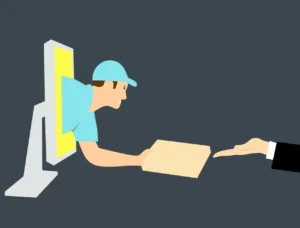
Master eBay Dropshipping and Amazon Dropshipping: A Beginner’s Guide
Dropshipping is a great way to start an online business without having to invest in inventory. With ebay dropshipping and amazon dropshipping, you can sell products directly from suppliers to customers, making it easy to make money online. In this guide, we’ll cover the basics of dropshipping, including how to find suppliers, list products, and fulfill orders. We’ll also share tips for success, such as building a strong brand and providing excellent customer service.
Are you dreaming of building your own online business but feel held back by high startup costs? eBay dropshipping and amazon dropshipping could be your perfect solution. With no need for inventory or warehouse space, this model is ideal for entrepreneurs looking to create a scalable, low-risk e-commerce store.
What is Dropshipping?
Dropshipping is a fulfillment method where you list products for sale without stocking them. Instead, when a customer places an order, the product is shipped directly from the supplier to the buyer. Here’s why ebay dropshipping and amazon dropshipping is a game-changer:
Low startup costs: No inventory means no upfront investment in products.
Scalability: Easily add new products and scale your business.
Flexibility: Work from anywhere with an internet connection.
Why Choose eBay and Amazon?
eBay and Amazon are two of the largest online marketplaces, making them ideal platforms to start your dropshipping business.
Amazon: 310+ million active users as of 2016.
eBay: A trusted marketplace with millions of buyers worldwide.
Pros and Cons of Dropshipping

Pros
- Minimal upfront costs.
- No need for inventory or warehouse space.
- Flexibility to work from anywhere.
- Potential for passive income.
Cons
- Time-consuming to create optimized listings.
- Customer service responsibilities remain with you.
- Profit margins can be slim if not managed properly.
Success Story: Daniel Mickoh
Daniel Mickoh turned dropshipping into a multi-figure business, earning $80,000 to $150,000 per month. Starting with Amazon affiliate sites, Daniel leveraged Facebook and Instagram ads to grow his stores.
His key to success?
- Researching competitors.
- Exploring new markets.
- Using virtual assistants to streamline operations.
FAQs About eBay Dropshipping and Amazon Dropshipping
1. Do I need a lot of money to start dropshipping?
No, dropshipping has low startup costs. You only pay for products after customers place orders.
2. How do I find reliable suppliers?
Search for reviews and ratings on supplier platforms like AliExpress. Always test suppliers before committing to larger orders.
3. Can I automate my dropshipping business?
Yes, you can use tools like Oberlo or DSers to automate order processing and inventory management.
4. Is dropshipping legal?
Yes, but ensure you follow eBay and Amazon’s policies and avoid selling prohibited products.
Tips for Long-Term Success
Diversify your niches: Expand to multiple product categories.
Leverage social media: Use Facebook, Instagram, and Pinterest to advertise your products.
Focus on customer satisfaction: Happy customers lead to repeat business.
Ready to build your ebay dropshipping and amazon dropshipping empire? Start small, stay consistent, and watch your business grow. Don’t forget to subscribe to our newsletter for insider tips, the best supplier recommendations, and product ideas guaranteed to sell!






